
Getting rid of excess fat through a healthy diet and regular exercise is almost challenging. No matter how hard you try to burn extra fat in different body parts, you will constantly fail to achieve the desired shape you dream of most of the time.
In this case, what is usually recommended is to undergo lipomatic, which is a relatively modern lipo procedure. Lipomatic surgery in Iran can be a proper choice for those wishing to have economical liposuction and a desirable outcome.
As one of the popular destinations for cosmetic surgeries, Iran has unrivaled features that can be barely found in other countries worldwide. In this regard, Iran can offer lipomatic to have extra pockets of fat removed all at once through lipomatic. What makes Iran outstanding is due to its affordable cost, cutting-edge facilities, modern hospitals and clinics, plus adept doctors who are undoubtedly at the pinnacle of their careers among their colleagues when compared to other countries.
Why Should You Choose Lipomatic in Iran?

Each year, Iran experiences a notable surge, attracting over 50 patients daily—both domestic and international—opting for Lipomatic procedure. The skyrocketing popularity of Lipomatic in Iran stems from various compelling factors within the realm of cosmetic enhancements.
Primarily, Iran stands out for its robust medical infrastructure and a cadre of skilled plastic surgeons specializing in Lipomatic surgeries. Renowned for their expertise, these professionals seamlessly blend technical prowess with artistic precision, delivering outstanding results aligned with patients’ aesthetic aspirations.
Adding to the allure is the cost-effectiveness associated with undergoing Lipomatic procedures in Iran. In stark contrast to regions like the USA and Europe, the expenses tied to body enhancement, covering surgery, hospital fees, and post-operative care, are significantly lower in Iran. This financial appeal positions Iran as an enticing destination for individuals seeking transformative changes to their physique.
Beyond affordability, Iran’s reputation as a culturally rich and welcoming country contributes significantly to the popularity of Lipomatic. Patients from diverse backgrounds find solace in the warm hospitality and compassionate care provided by Iranian medical professionals, fostering a supportive and inclusive environment throughout their transformative journey.
Additionally, the burgeoning influence of social media and prevailing beauty standards plays a pivotal role in the increasing demand for Lipomatic in Iran. As images and trends disseminate rapidly through online platforms, individuals draw inspiration from the well-defined figures of celebrities and influences. This, in turn, fuels the desire for body enhancement as a pathway to attaining a more desirable physique.
Why Should You Arrange Medical Procedures with Ermateb?
Ermateb complex is a facilitator in the medical tourism industry. One of the primary goals of this cooperation is to provide the best medical services with the highest quality.
In this Group, we consider the commitment and responsibility for the welfare and comfort of patients as a turning point to provide the best services in the field of medical tourism.
Ermateb has arranged and gathered the most professional and top hospitals, clinics, and doctors who are the best in their field of work.
Everything is ready to help our customers in terms of choosing the best surgeons in order to have their lipomatic surgery in Iran.
Obtaining a visa, booking flight and accommodations, in addition, transfer services including, picking you up at the airport, transferring to your hotel and hospital, and assigning a personal interpreter and guide in order to help you during your stay and medical procedure, and providing post-operative care, following up the patient and related consultations will be arranged by Ermateb if you decide to have your lipomatic in Iran.
How Much Does Lipomatic Cost in Iran?
 Different factors influence the lipomatic such as the type of anesthesia, the number of areas lipomatic is going to be implemented, and the location of the lipomatic is going to be treated.
Different factors influence the lipomatic such as the type of anesthesia, the number of areas lipomatic is going to be implemented, and the location of the lipomatic is going to be treated.
In general, on average, lipomatic surgery in Iran costs around $700 per area, but Ermateb offers $600. Comparing the cost of lipomatic in Iran, you can see a significant difference between lipomatic costs in Iran and other countries. To illustrate, lipomatic costs $4,500 in the U.K., $4,000 in the U.S., $3,000 in Turkey, $2,000 in India, and $4,000 in South Korea.
What is Lipomatic Surgery?
Lipomatic surgery, derived from the innovative lipomatic device, has emerged as a transformative plastic surgery method designed to eliminate fat deposits situated between the skin and muscles. Going beyond conventional liposuction, the lipomatic procedure is a sophisticated liposculpture technique crafter for reshaping the contours of your body.
Unlike traditional methods that merely remove fat, Lipomatic surgery involves the strategic relocation of fat, preserving it from burning or damage. This unique approach allows for the repurposing of extracted fat, following processing and purification, for transfer to other areas of the body such as the face, breasts, or buttocks—enabling additional enhancement.
This groundbreaking technique proves particularly effective in treating areas resistant to diet and exercise, providing a solution to stubborn localized fat pockets. Employing vibration to emulsify fat tissue, the surgeon uses cannulas to gently break down the underlying fat, facilitating easy extraction through suction. Noteworthy is Lipomatic’s built-in active security system, which safeguards non-fatty tissues, including blood vessels, nerves, and muscles, ensuring their preservation.
The Lipomatic procedure stands out as the least invasive among liposuction methods, offering a minimally invasive alternative for those seeking optimal body sculpting. Its distinct advantages include significantly reduced brusing and swelling, minimal pain, and outstanding skin reduction. By seamlessly combining artistry with technical expertise, Lipomatic surgery establishes itself as a progressive and patient-friendly choice for achieving the desired body aesthetics with enhanced safety and comfort.
What Are Preoperative Steps Undergoing Lipomatic Surgery in Iran?
When preparing for lipomatic surgery in Iran, certain crucial steps should be followed to ensure a smooth and successful procedure:
1. Information Gathering:
- Collect comprehensive information about the lipomatic procedure in Iran.
2. Medical History and Testing:
- Thorough examination of the target area to be treated.
- Your doctor will review your medical history, including essential tests such as blood tests and pregnancy tests.
- Body mass index (BMI) evaluation and an assessment of your current medications will be conducted.
3. Restful Night:
- Ensure a well-rested night before the scheduled lipomatic surgery to promote overall well-being.
4. Lifestyle:
- Refrain from smoking and alcohol consumption for at least two weeks before the liposuction procedure, promoting a healthier preoperative condition.
5. Dietary Consideration:
- Reduce salt intake both before and after the surgery to optimize the outcomes of the lipomatic procedure.
How is Lipomatic Surgery Carried Out in Iran?

The Lipomatic surgery process encompasses various stages, outlined as follows:
Before the Surgery
Step 1- Examination
First and foremost, before proceeding to lipomatic liposuction, a general examination is performed. In this process, it will be calculated how much fat needs to be taken from the target areas.
During the Surgery
Step 1- Anesthesia
Typically, general anesthesia is not required in lipomatic liposuction, which is more advantageous in comparison to the other methods of fat removal. So, local anesthesia can be administered without any risk or complication involved in the operation.
Step 2- Making the incision.
After examining the desired amount of removed fat and administering anesthesia, the surgeon makes inconspicuous and small incisions and inserts a small tube under the skin. This tube is utilized either to remove the fat via suction or to move it to the other parts of the body that needs improving the appearance of a specific area, such as the buttocks or the face.
After the Surgery
Unlike traditional liposuction, in which general anesthesia is usually applied, patients undergoing lipomatic only receive local anesthesia. Therefore, it is not required for the patient to gain consciousness after the surgery. Actually, there is less recovery period required compared to other applications. Right after the operation, the patient can go or be transferred to the hotel.
Note that patients are required and advised by their doctor to use a corset for a certain period for precautionary purposes. The aim of doing so is to prevent the skin from sagging completely.
Who Can Have Lipomatic Surgery?

Liposuction has always been a popular way to eliminate unnecessary fat in certain body parts, which cannot go away by diet or exercise. Since liposuction has made significant development in recent years and many high-tech procedures have been introduced and added that can be utilized alone or as a mixture with other procedures like tummy tuck, it can be applied to anyone over the age of 18 and, in good general health.
Good candidates for such weight-loss surgery are those under a BMI of 30 and have good skin with elasticity. The younger the patient is, the better results can be expected, especially for those who refrain from smoking. People having loose skin or weak muscles might not achieve the desired body shape they expect to benefit from lipomatic surgery.
Furthermore, this procedure is ideal for men having gynecomastia in a short time. In other words, a lipomatic device is capable of removing glandular tissues in the breast very quickly.
Lipomatic can successfully be performed on areas like arms, legs, hips, chest, neck, abdomen, and waist. The lipomatic's success significantly depends on a highly sensitive device used to degrease excess fat in the body.
Who Is Not Eligible for Lipomatic Surgery?
Embarking on the transformative journey of lipomatic surgery involves careful consideration of eligibility criteria. This innovative cosmetic procedure may not be suitable for certain individuals, including:
- Individuals with infections or open sores at the target site.
- Those not in optimal health.
- Individuals under 18 years old.
- Individuals allergic to topical anesthetics like lidocaine.
- Individuals anticipating unrealistic results from lipomatics.
- Pregnant woman.
- Individuals with chronic or serve infectious diseases.
- Recent recipients of liposuction surgery, considering the need for an appropriate recovery period.
- Excessive tobacco or drug users.
- Patients with coagulation disorders, such as hemophilia, or those taking anticoagulants.
- People dealing with cardiac or liver diseases, uncontrolled diabetes, and high blood pressure.
- Individuals classified as obese, as lipomatic is designed for eliminating localized fat, not for those with high fat volumes.
How Long Does It Take to Recover from Lipomatic Surgery?
The recovery time required for such a liposuction method is generally between 3 and 7 days before you can go back to work. And 4 to 6 weeks is usually needed to get back to physical activities like exercise, running, etc.
Also, you may suffer from mild swelling after the surgery, which is not a major issue to worry about. And you should expect 3 to 6 months for long-term recovery; you can probably see the final results of lipomatic liposuction since swelling completely subsides and disappears after this period.
Lipomatic Recovery Tips
Here, we have prepared a list of post-lipomatic care tips that contribute to efficiently accelerating your healing process. These tips are listed below:
Stay Hydrated
It is of high vitality to maintain proper hydration to prevent dehydration during recovery from liposuction. The patient should typically drink roughly 8 glasses of water daily; however, note that one's water intake after the surgery must not exceed 10 to 12 glasses daily.
Maintain a Healthy Diet
Nothing can noticeably accelerate your recovery except following a perfect diet leading to bringing the best possible results. In addition, if the patient maintains a good diet, they will experience less swelling.
A proper and balanced diet contains antioxidants, vitamins, and other beneficial nutrients by which you can help your body to regain its strength and heal properly in a shorter period.
Before undergoing the lipomatic or liposuction procedure, you can follow the tips on how to prepare for liposuction:
- Sugar intake should be cut down to avoid suppressing your immune system
- Salt intake should be reduced since it can encourage the body to retain water and worsen swelling
- Small rations of food can be made to consume multiple times during the day in the case to avoid bloating or nausea
- Protein intake had better be increased in order to help with wound healing and skin and muscle regrowth
Wear Proper Clothes
Knowing what to wear after lipomatic surgery is critical since it ensures a speedy recovery process. As the doctors recommend, one should avoid clothes that fit too tightly, which can irritate your skin, leading to slowing down the healing process. Instead, loose-fitting clothes should be worn, and the patient must feel comfortable during recovery.
Avoid Soaking
In the post-operative process, the patient who has just undergone lipomatic must refrain from soaking in water since this can reduce the healing rate and even lead to an infection. Patients are often recommended to avoid swimming for 2 weeks at least and bathing for 24 hours after the surgery. Additionally, the patient must avoid hot water for a month following the operation.
To accomplish a speedy recovery, avoid soaking in the bathtub or hot tub or submerging your body in water until you are healed.
Lymphatic Massage
One effective way to decrease recovery time is getting a lymphatic drainage massage that focuses on releasing accumulated toxins from the lymph nodes. This type of massage can minimize pain and discomfort experienced by the patient after the surgery. Lymphatic massage should be done weekly, which helps to enhance the patient's immunity system, lowering the risk of infection.
Attend Follow-up Appointments
Regular follow-up appointments provide an opportunity for your doctor to gauge your healing and monitor the recovery process. To do so, the driver assigned by Ermateb will take you to your surgeon's office for the post-op appointments as scheduled after the surgery.
Keep Moving
After the surgery, the body needs to rest and recover over 24 hours. Afterward, doing light and short exercises can help to speed up the body's healing process.
Don't forget that you should stay away from intensive and vigorous exercise and sports for the first few weeks after the surgery. For more information in this respect, you can consult with your doctor and get instructions on when you are allowed to reincorporate physical activities.
Alternative Approaches to Fat Removal
Exploring cosmetic procedures to attain the desired body contour often leads to the consideration of various fat removal methods. These approaches are outlined below.
Liposuction
Utilizing a thin steel tube called a cannula, liposuction is a more aggressive fat removal method, involving the extraction of fat from the body. This approach is associated with increased complications and a lengthier recovery period compared to non-surgical alternatives.
Gastric Bypass Surgery
Gastric bypass surgery involved various techniques that aim to reduce the size of the stomach to limit food intake. This method is particularly suitable for individuals dealing with obesity.
Liposculpture
Liposculpture is a minimally invasive cosmetic procedure designed to eliminate excess fat, providing a more sculpted and defined appearance. In certain cases, plastic surgeons refine the extracted fat and strategically reinsert it into another area of the body to enhance overall results.
Lipofilling
Lipofilling, or fat transfer, is an established technique utilizing the patient’s own fat as a permanent filler for soft tissue volume enhancement. The process involves extracting fat through thin cannulas via conventional liposuction or lipomatic filtering it, and then precisely injecting it into deficient areas. Beyond adding volume, lipofilling reduces scarring and enhanced skin quality. While its mechanism isn’t fully understood, the technique has consistently demonstrated safety and efficacy in various applications, including soft tissue augmentation, body contouring, facial rejuvenation, and both reconstructive and aesthetic breast surgery.
What Are the Differences Between Liposculpture and Lipomatic?
Various factors come into consideration when examining the differences between Liposculpture and Lipomatic procedure. These points are mentioned as below:
Liposculpture Distinction:
- Different from traditional liposuction
- Focused on contour correction
Technological Nuances:
- Utilizes micro-cannulas for precision
- Small incisions near targeted areas
- Fine cannulas inserted for intricate control
Cannula Specifics:
- Cannulas thinner than those in liposuction
- Greater surgeon grip on fat cells
- Enhances the intricacy of the procedure
What Are the Differences Between Lipomatic and Liposuction?
When considering the distinctions between Lipomatic and traditional liposuction, several factors come into play:
- Healing Duration: The recovery period for liposuction tends to be lengthier compared to Lipomatic, emphasizing the efficiency of the latter in promoting quicker recuperation.
- Side Effect Discrepancy: Liposuction is associated with a higher incidence of side effects compared to Lipomatic, making the latter a potentially more favorable option for those seeking a smoother post-procedural experience.
- Fat Extraction Quantity: In liposuction, the amount of fat extracted is notably less when contrasted with Lipomatic, where a more substantial volume of fat cells can be targeted and reshaped.
- Reshaping Capacity: The Lipomatic method stands out for its capability to reshape a greater number of fat cells, providing enhanced sculpting possibilities compared to the more limited scope of traditional liposuction.
- BMI Considerations: For patients with a higher BMI, liposuction may be deemed more efficient, addressing the specific needs of individuals with greater body mass more effectively than Lipomatic.
Risks and Side Effects of Lipomatic Surgery
While Lipomatic procedures are typically performed by experienced and skilled doctors, resulting in a history of minimal serious side effects, certain mild and transient effects may occur post-procedure. These commonly encountered side effects include:
- Moderate to Serve Bruising: Bruising at the entry and exit points of the cannula bar is a normal occurrence, with the potential persist for several weeks.
- Mild to Moderate Swelling and Pain: Temporary inflammation, induced by the cannula’s interaction with body tissue, may lead to swelling and pain in the treated area. Post-surgery discomfort is generally experienced for two or four days.
- Procedure-specific Safety: Lipomatic, characterized by its non-invasive nature and the use of local anesthesia, presents fewer risks and side effects compared to alternative fat removal methods.
However, before opting for Lipomatic surgery, it is crucial to share your complete medical history with an experienced plastic or cosmetic surgeon in Iran. Several considerations and contraindications include:
- Surgeon’s Expertise: The surgeon’s experience and expertise significantly influence the success and speed of recovery post-Lipomatic. Opting for a qualified professional is paramount.
- Facility Standards: The presence of well-equipped hospital facilities offering comprehensive surgical and postoperative care is another critical factor affecting the outcome.
- Inappropriate for Weight Loss: Lipomatic is not a suitable option for individuals seeking weight loss, especially those dealing with obesity, as the surgical risks are elevated.
- Pre-existing Conditions: Individuals with specific health conditions like cardiovascular disease, lung disease, or diabetes should refrain from undergoing Lipomatic.
- Postoperative Compliance: Adhering to the postoperative recommendations provided by your surgeon is imperative to minimize the potential risks associated with Lipomatic in Iran.
In comparison to traditional liposuction, where approximately 5 out of every 100 surgeries may result in mild treatable complications, lipomatic surgery tends to exhibit a lower incidence of postoperative complications. Nonetheless, each patient’s unique circumstanced should be considered in consultation with a qualified medical professional.

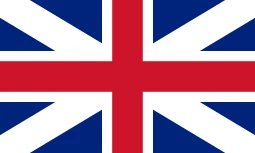
 Arabic
Arabic
 German
German
 Persian (Farsi)
Persian (Farsi)
 Russian
Russian
 Beauty
Beauty






 Medical
Medical





 Hotels
Hotels
 Hospitals
Hospitals







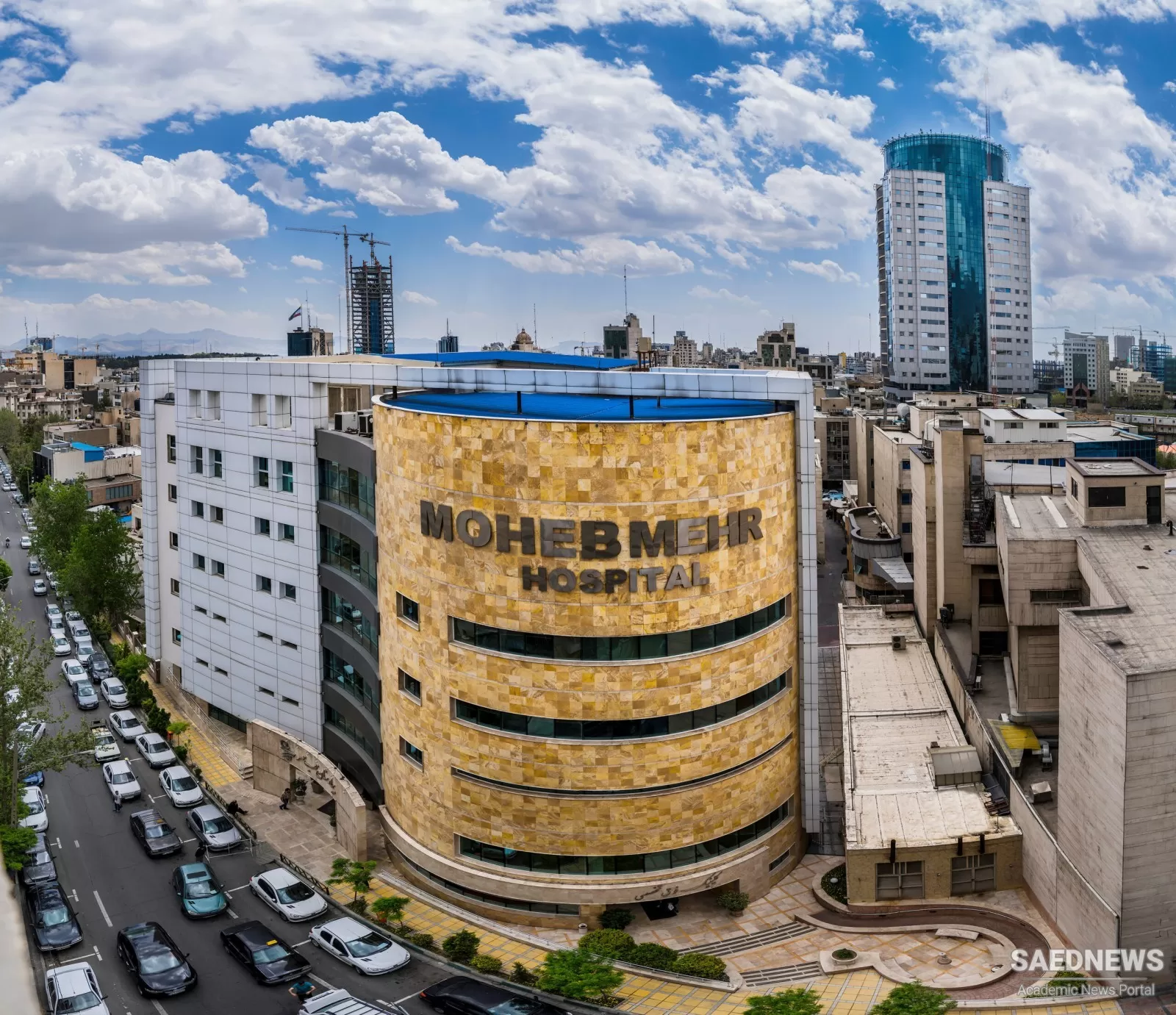
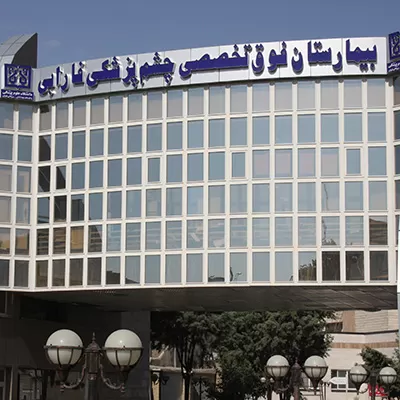









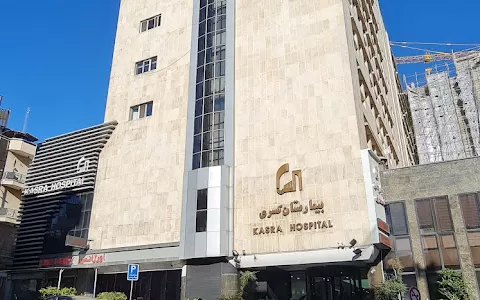

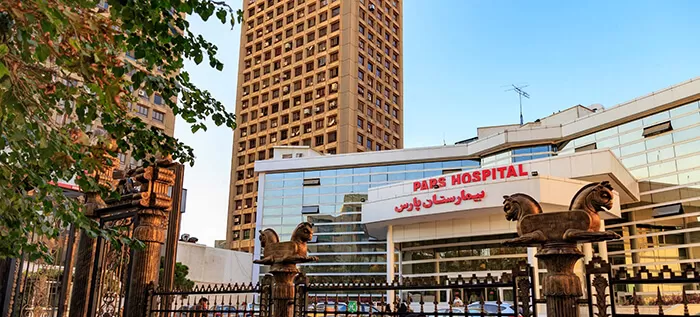

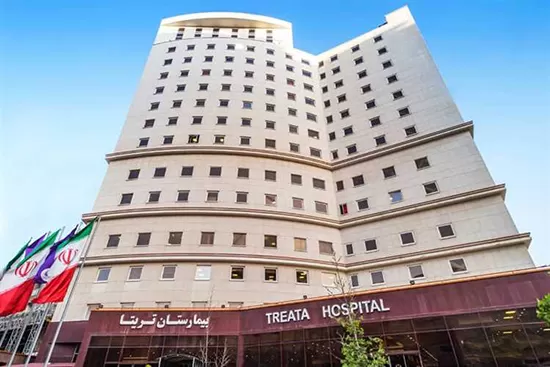

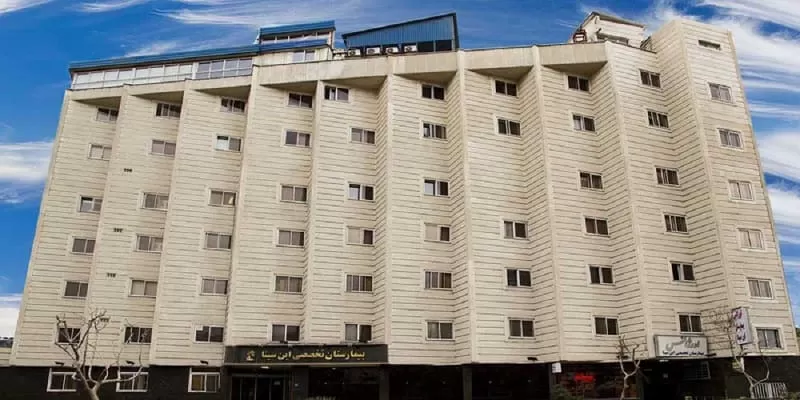





![Frequently asked question about [name]](/v2tem/images/pages/service/faq-image.webp)
